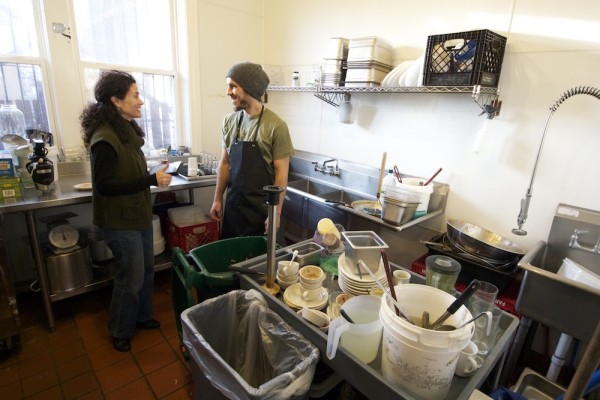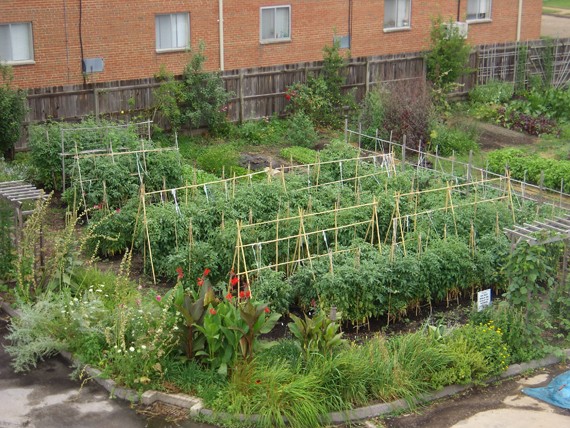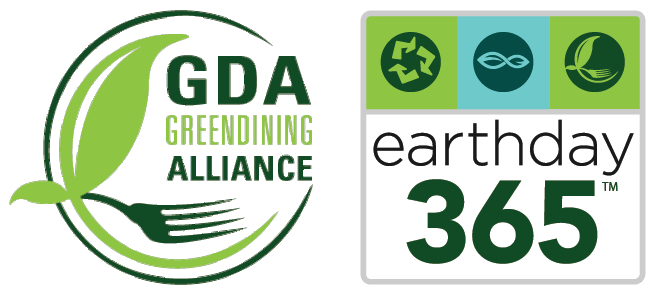What exactly do we mean by “green?”
As our nation and world have become increasingly concerned with how we affect the environment – and, vitally, how it affects us – the word “green” has been cropping up a lot. You may have seen it in an ad for efficient light bulbs, but also on a detergent by Clorox bleach claiming to use “natural” ingredients with a bright, leaf-inspired design on the face of the product.
If you or someone you love believed the word “green” on a bottle of bleach-containing detergent, then alas: another good samaritan has fallen victim to “greenwashing.” Don’t worry, it happens to the best of us, because companies pay big bucks to make their green sheen attractive and believable.
Greenwashing is, as Google puts it, “disinformation disseminated by an organization so as to present an environmentally responsible public image.” Not everything that says it’s green is actually helping the environment, and it it’s trying to get you to buy it, chances are you should think twice. Read the label, consult the Google, call one of your Environmental Science friends – or you could poke around the GDA’s blog, too.
“Green” is an unregulated world that has varying interpretations, but here at Green Dining Alliance, we’re not wishy-washy about sustainability.

GDA Audit Specialist, Jaime Kelley, assessing the kitchen at Local Harvest (LHC) in Tower Grove South
We call a restaurant “green” based on solid practices and policies. Here are the overall considerations we take into account:
What’s coming into the restaurant? Are they:
- leaving behind a low-impact trail of trash and pollution?
- Ex: Polystyrene (#6 plastic – think ‘Styro-foam’ or disposable utensils) production and recycling are hard on the Earth, its air, and the people living and working near the plants – and since plastic is not an organic material, it is unable to break down into the environment in a healthy way.
- buying ingredients and products that are local, organic and/or compostable?
What’s happening inside the restaurant? Are they:
- conserving water, energy, and other natural resources?
- considering social sustainability?
- Ex: buying Fair Trade coffee or tea, or participating in a community give-back program
And what’s happening when all of those resources leave the restaurant? Are they:
- diverting re-usable Missouri resources from landfills?
- Ex: Aluminum cans can be recycled and back on the shelf in just 30 days, and the entire process happens here in the Gateway region!
- Ex. Did you know that when organics – any foods, plants, or paper products – get dumped in landfills, they produce 17% of our nation’s methane emissions? But, when organics are recycled via composting, the carbon and nutrients break down properly and are fed back into the soil, completing the “cycle of life” loop and keeping methane out of our atmosphere.
To sum it all up, we call an establishment, product, or practice “green” when the environmental impact of everyday actions are carefully considered, and lifestyles and systems reflect these considerations.
Words like low-impact, biodegradable, organic, can sometimes be better indicators of eco-friendliness than “green.” Just remember that as the world is not black and white, or simply green or not green. There are many shades of greenness out there, and hardly ever a one-size-fits-all solution for sustainability. But hey, while that does mean exercising due vigilance when we go shopping or dining, it also means we get to be creative and innovative as we face new situations.
Be wary of greenwashing, friends. Look to the GDA for assurance that a restaurant and its practices really are green.
The “S” Word: Sustainable
Sustainable has become a buzzword, and many companies and businesses throw it around without consideration of what the concept really means. Like the word green, it is unregulated and is applied by different companies for different uses – muddying its true meaning and making it harder for a sincere interpretation of the concept.
Well, the Green Dining Alliance has done some research. There are stead-fast definitions for this word, and there are reasons why the GDA doesn’t take it lightly. Generally speaking, a sustainable company will have a triple bottom line, or the ‘3 P’s’: profit, people, and planet.
Here is a definition of sustainability at one end of the spectrum. This is from Iroquois Faithkeeper Oren Lyons, and its what inspired the “Seventh Generation” company’s name:
“In our way of life, in our government, with every decision we make, we always keep in mind the Seventh Generation to come. It’s our job to see that the people coming ahead, the generations still unborn, have a world no worse than ours and hopefully better. When we walk upon Mother Earth we always plant our feet carefully because we know the faces of our future generations are looking up at us from beneath the ground. We never forget them.”
For something closer to the middle of the spectrum – and more along the lines of what you’ll see in St. Louis – here is what the EPA has to say:
“Sustainability is based on a simple principle: Everything that we need for our survival and well-being depends, either directly or indirectly, on our natural environment. Sustainability creates and maintains the conditions under which humans and nature can exist in productive harmony, that permit fulfilling the social, economic and other requirements of present and future generations.
Sustainability is important to making sure that we have and will continue to have, the water, materials, and resources to protect human health and our environment.”
The takeaway? Sustainability is not simple, nor is it impossible. It’s a vision to work toward. It means we have to build a world we can sustain. It comes down to prioritizing the health and quality of the future before the immediate satisfaction of the present.
And it’s happening here. Sustainable practices are appearing all over our city, from a food truck with a garden on the roof, to an urban farm providing fresh produce for the city while offering therapy and employment for St. Louis’ homeless and veteran population.
Perhaps the most important facet of sustainability is that we all work together to make it a reality.

A view of Schlafly Bottleworks’ on-site garden, from which they harvest hundreds of pounds of produce for their restaurant.
Sources: (for more reading!)
Environmental Protection Agency (Sustainability)
Environmental Protection Agency (Green house gases)
Scientific American: What is Greenwashing?
The Economist (Triple Bottom Line)
Triple Pundit.com: The Triple Bottom Line
University of Wisconsin: Understanding Sustainability and the Triple Bottom Line


